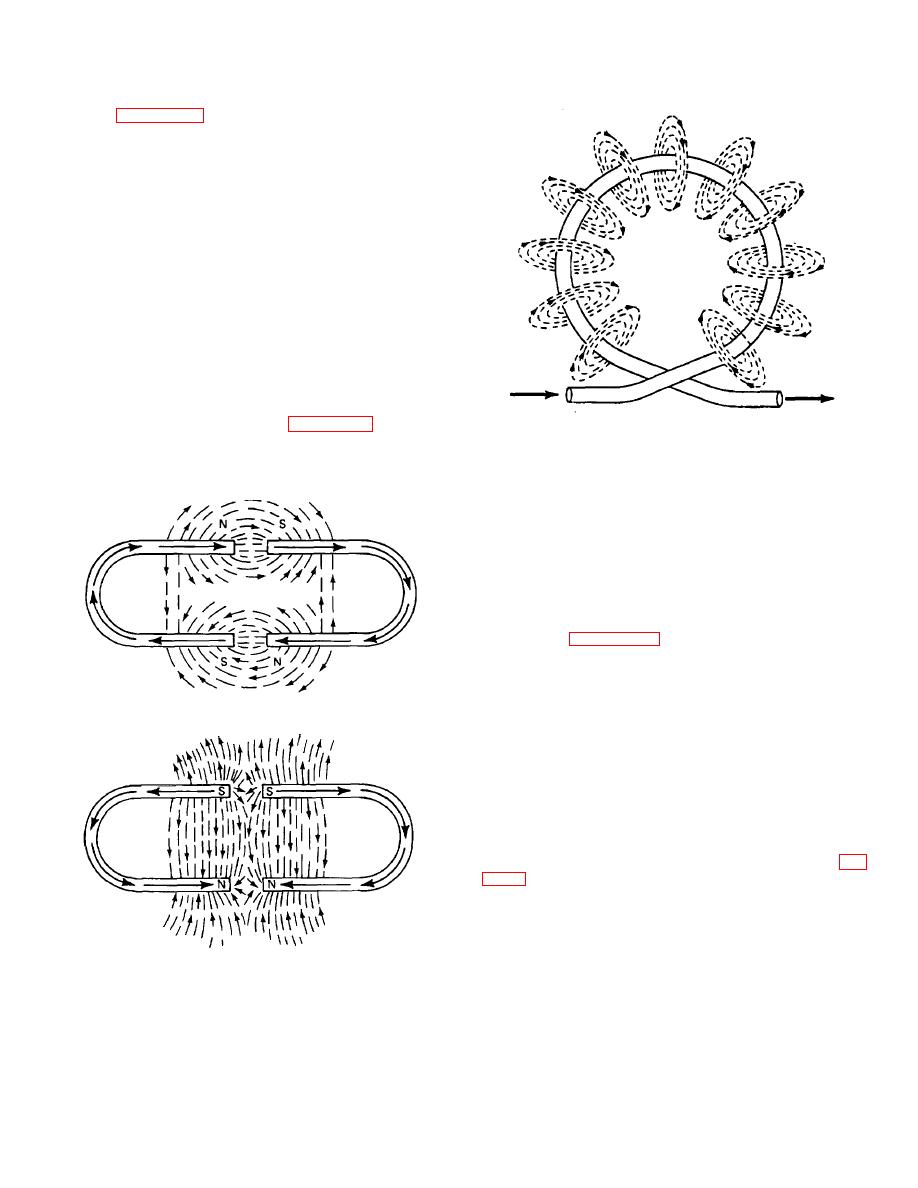
| Tweet |

Custom Search
|
|

|
||
 TM 9-8000
shown in figure 11-18, current flow causes lines of force
to circle the wire. It is thought that these lines of force
result from the movement of the electrons along the wire.
As they move, the electrons send out the lines of force.
When many electrons move, there are many lines of
force (the magnetic field is strong). Few electrons in
motion means a weak magnetic field or few lines of
force.
b. Electron movement as the basis of magnetism in
bar and horseshoe magnets can be explained by
assuming that the atoms of iron are so lined up in the
magnets that the electrons are circling in the same
direction. With the electrons moving in the same
direction, their individual magnetic lines of force add to
produce the magnetic field.
c. The magnetic field produced by current flowing
in a single loop of wire is shown in figure 11-19. The
Figure 11-19. Electromagnetism in a Wire Loop.
magnetic lines of force circle the wire, but here they must
follow the curve of the wire. If two loops are made in the
between the adjacent loops, the magnetic lines are going
conductor, the lines of force will circle the two loops. In
in opposite directions. In such a case, because they are
the area
of the same strength (from same amount of current
traveling in both loops), they cancel each other out. The
lines of force, therefore, circle the two loops almost as
though they were a single loop. However, the magnetic
field will be twice as strong because the lines of force of
the two loops combine.
d. When many loops of wire are formed into a coil
as shown in figure 11-20, the lines of force of all loops
combine into a pattern that resembles greatly the
magnetic field surrounding a bar magnet. A coil of this
type is known as an electromagnet or a solenoid.
However, electromagnets can be in many shapes. The
field coils of generators and starters, the primary winding
in an ignition coil, the coils in electric gages, even the
windings in a starter armature, can be considered to be
electromagnets. All of these produce magnetism by
electrical means, as discussed in paragraph 11-15.
e. The north pole of an electromagnet can be
determined, if the direction of current flow (from negative
to positive) is known, by use of the left- handed rule (fig.
fingers pointing in the direction of current flow. The
thumb will point to the north pole of the electromagnet.
This rule is based on current, or electron, flow from
negative to positive
Figure 11-18. Electromagnetism.
TA233532
11-15
|
||
 |
||